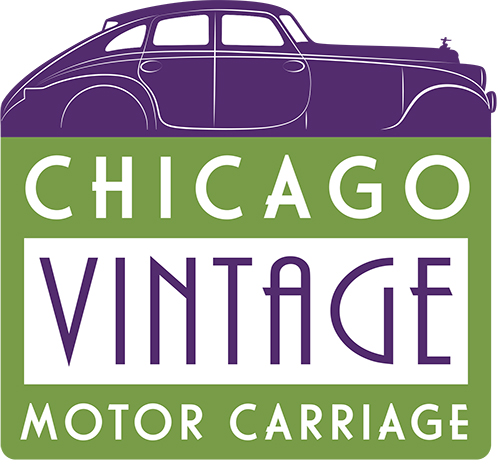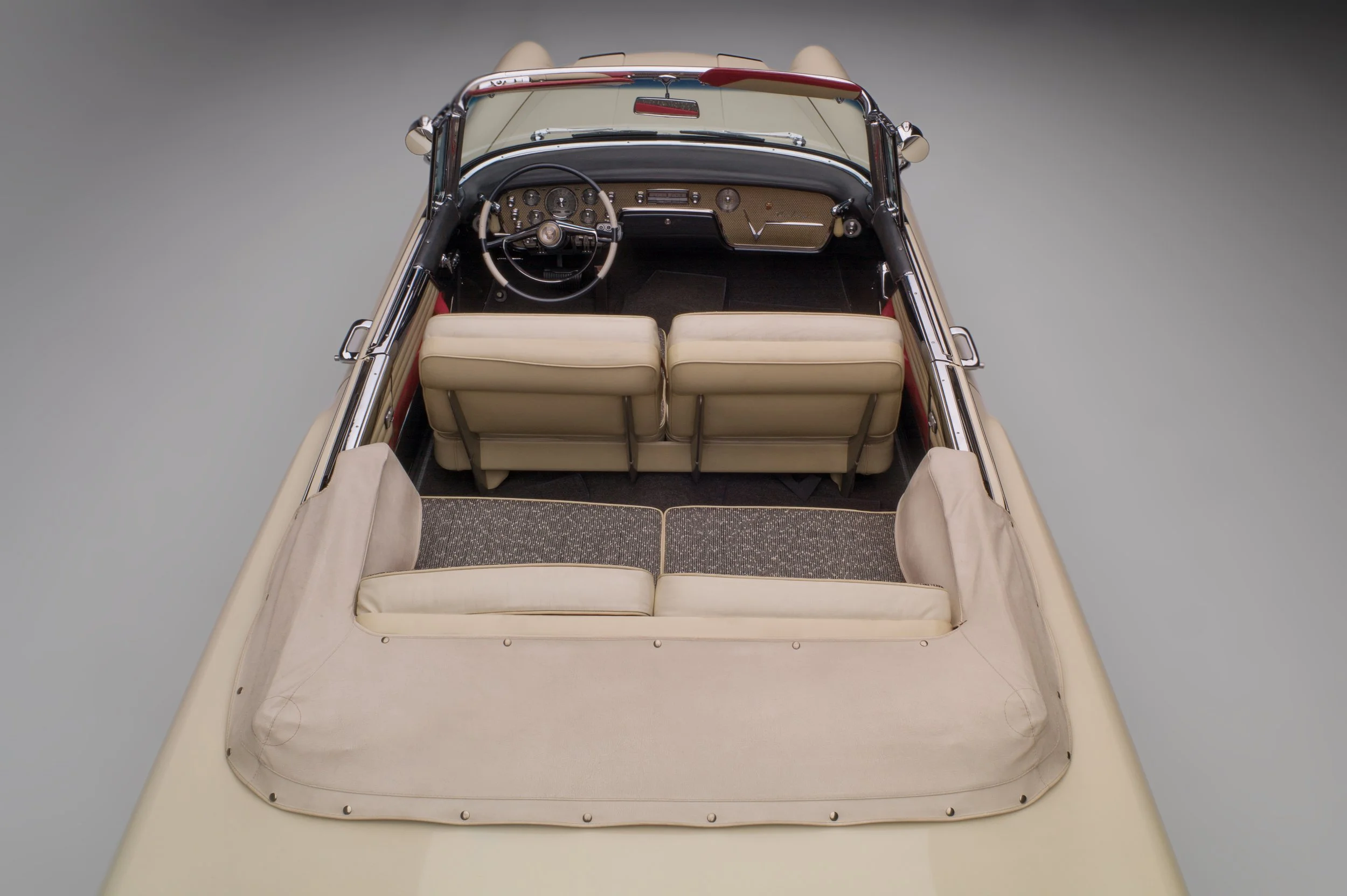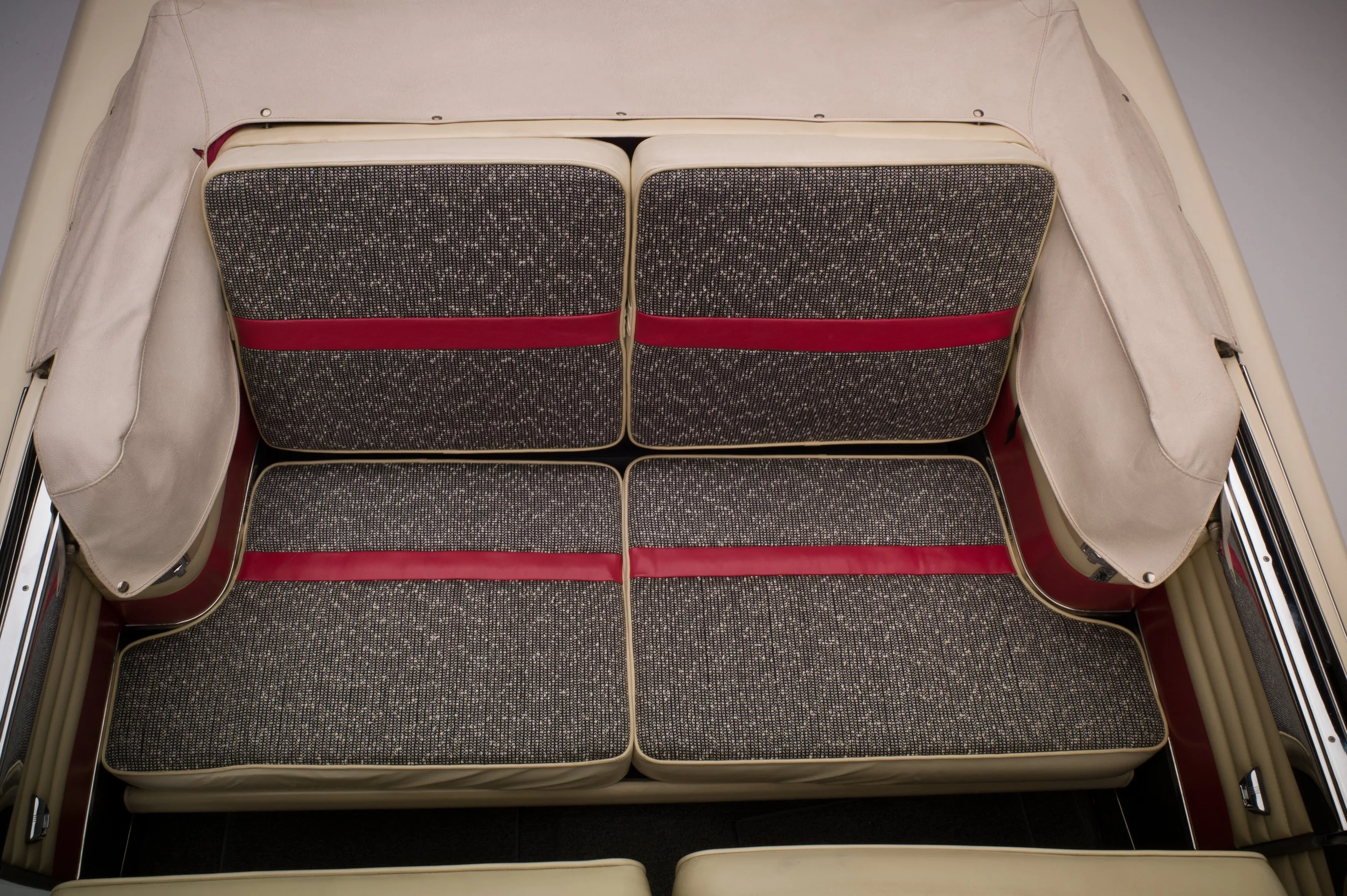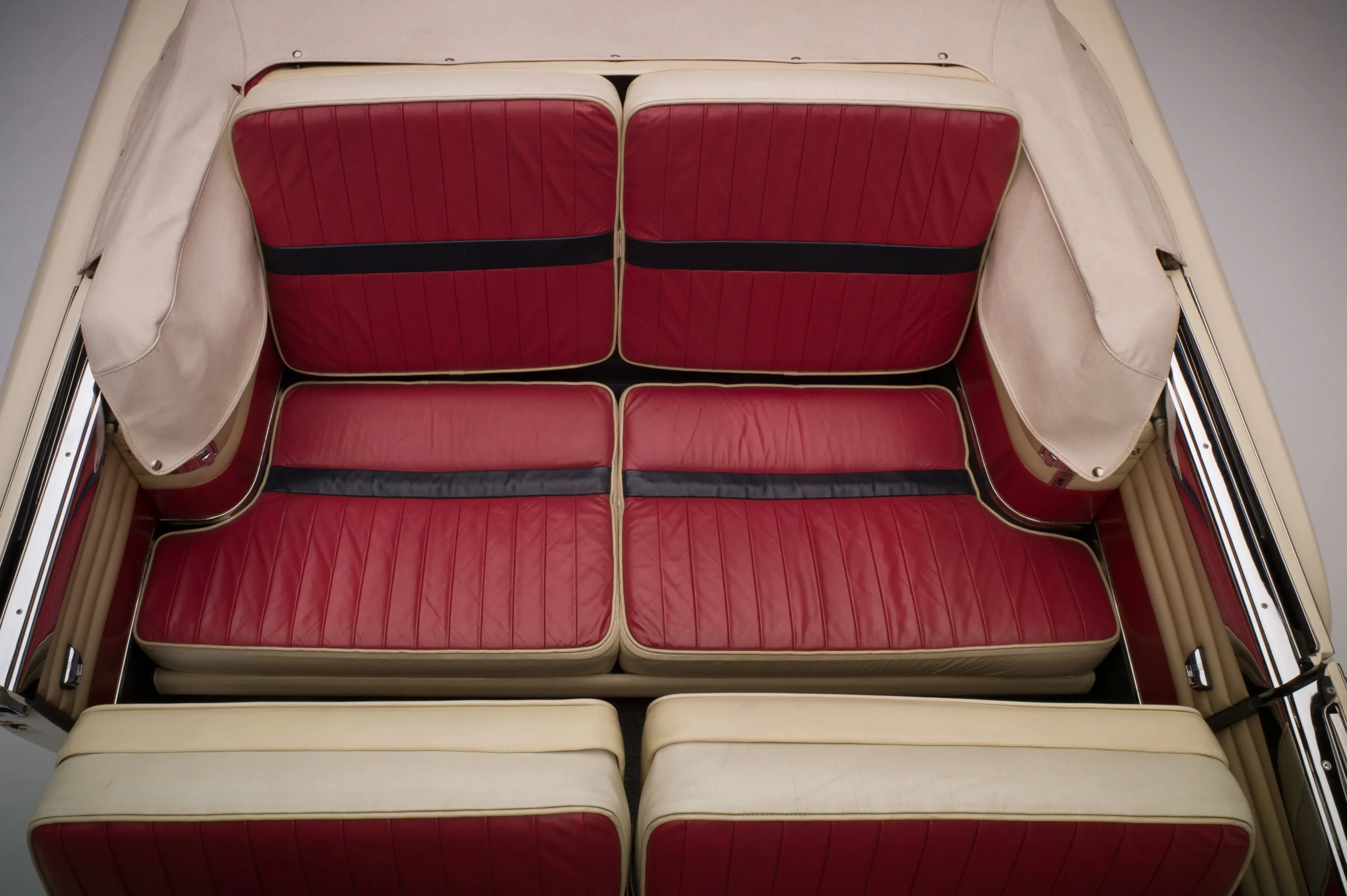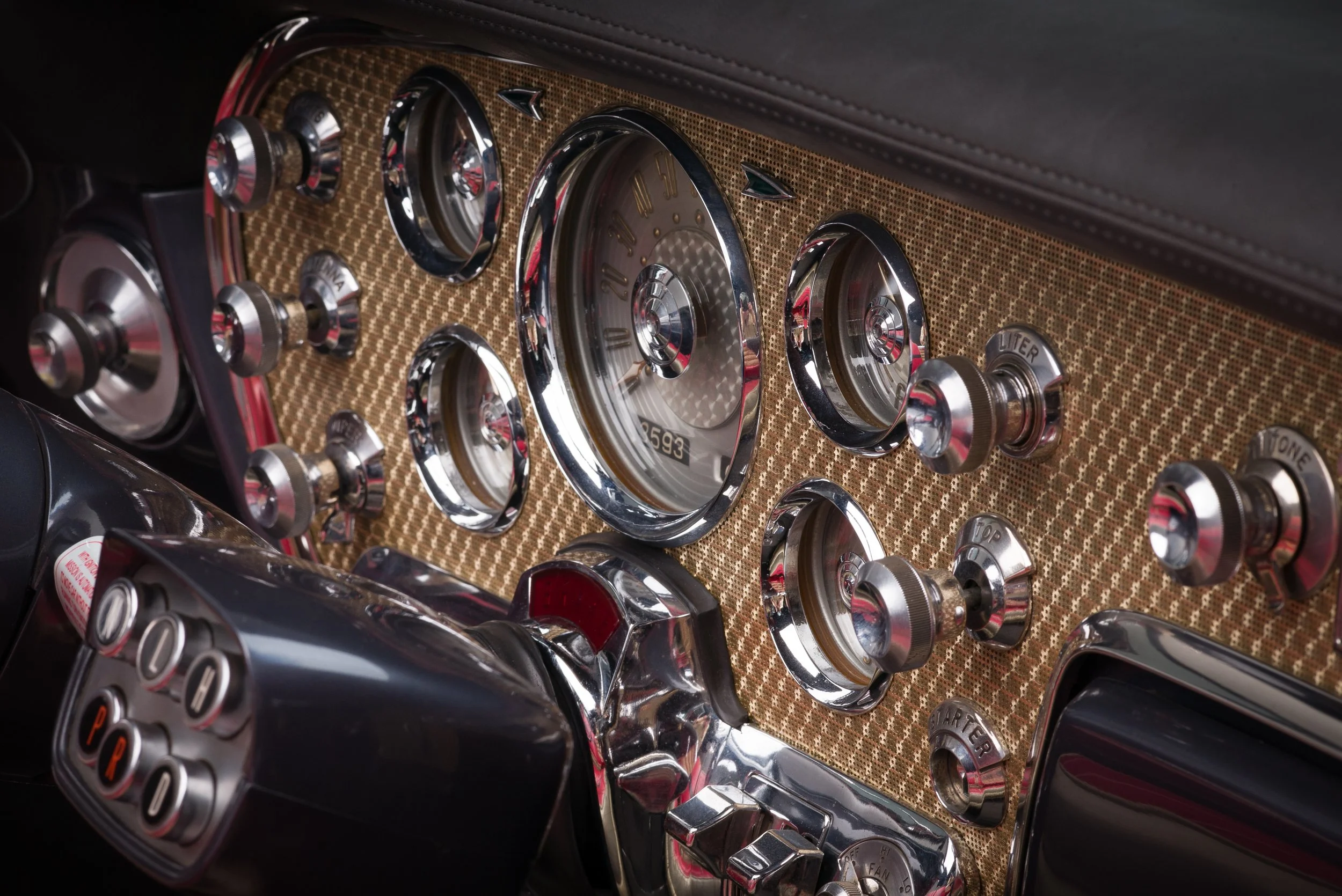1956 Packard Caribbean
1956 Packard Caribbean
Packard designer Richard Teague was faced with an unenviable, perhaps even impossible task: Using the old Packard 400 chassis and what little he could scrape up of Packard’s vanishing resources, he had to come up with a new flagship model, a car to save the company.
- YEAR & MAKE - 1956 Packard
- MODEL NAME - Caribbean
- SERIES - 5688
- MODEL/BODY/STYLE NUMBER - 5699
- BODY TYPE - 2 Door, 6 Passenger Convertible Coupe
- BODY BY - Packard
- # CYLS. - V8
- TRANSMISSION TYPE & NUMBER - Electronically-Controlled Push Button Ultramatic Gear Selector, RWD
- WEIGHT - 4,960 lbs
- ESTIMATED PRODUCTION - 276
- HP - 310
- C.I.D. - 374
- WHEELBASE - 127″
- PRICE NEW - $5,595
If you were to try to pinpoint a moment in history when Packard’s fate was sealed, you might pick 1950. While their wartime production was considered the most efficient in the industry and they emerged as one of only two car companies not in debt, postwar steel shortages made their cost of doing business higher than it should have been. Packard rode the wave of pent-up demand through three very successful years but by 1949 and ‘50, a disturbing number of sales weren’t going to their traditional luxury car and repeat Packard owners, but first-time buyers, who were capitalizing on the ability to buy the Packard nameplate on the marque’s downmarket Standard Eights with money saved up over the last decade. As Robert Turnquist wrote in The Packard Story, these buyers “Would never again be in a position to purchase an expensive car.” Those people still existed, but factors including Packard’s controversial “bathtub” styling sent them to Cadillac showrooms, instead. “Packard’s repeat business, which is the main-stay of any sales organization, was gone,” wrote Turnquist.
In its heyday, Packard was known for producing truly exquisite luxury automobiles, a member of the Three P’s of Luxury—Packard, Pierce-Arrow, and Peerless. Now, however, the focus on the economy market was taking its toll and Studebaker-Packard president James J. Nance knew he would have to take drastic measures.
Building on the style of the Pan American concept car of 1952, Packard developed the Caribbean convertible as a top-of-the-line offering for 1953, pairing channeled, low-slung good looks with powerful performance. Although production was limited, the new Caribbean line outsold its Lincoln competition, proving its worth in the marketplace—and ensuring that Packard would continue the luxury effort.
1955 marked the first refresh of the Caribbean; while the car was still built on the old 127-inch-wheelbase Packard 400 chassis, a deft styling revision Dick Teague made the car appear longer, lower and wider, in keeping with market trends. Full-line sales doubled for 1955, lending yet more momentum to the turnaround attempt. Packard was still ailing, but it seemed that reinvigorating its former glory might be exactly what was needed to keep the company afloat.
Thus, for 1956, Packard threw everything it had at the Caribbean, breaking it into a separate luxury series with the $5,995 convertible being joined by a new hardtop. A massive 374-cu.in. V-8 outfitted with 10:1 compression and twin four-barrel Rochester carburetors made 310hp—the highest rating in the industry that year. A limited-slip differential added excellent handling. The electrically actuated Touch Button Ultramatic automatic push-button transmission came standard; unfortunately, the system was plagued with problems from the start and proved to be the Caribbean’s major mechanical failing.
One innovation that truly deserved the name, however, was Packard’s Torsion-Level suspension. A single long torsion bar on each side of the car suspended the front and rear, while a second pair of torsion bars at the rear connected to a self-leveling motor. As a result, Caribbeans were able to glide over the roughest of roads with nary a bump, introducing a luxuriously comfortable ride to match the car’s powerful performance and handling.
With tri-tone paint and gleaming swathes of chrome; cathedral taillights; radiused rear wheel openings; a continental kit; hood scoop; twin antennas; and with gold-tone Caribbean scripts, there was little doubt you were looking at the top of the Packard line.
The upscale treatment continued inside the car, as well. Power windows, dual heaters and defrosters, and Wonderbar radio set the tone for the interior appointments, with a truly standout feature for the car’s upholstery: Novel reversible seat cushions featured brocade cloth on one side with leather on the other.
Sadly, only a handful of Packard Caribbean Convertibles were produced for 1956—a mere 276 of these distinctive automobiles were made, and 1956 would be the last year for the “true” full-sized Packard. At the end of the model year, Packard’s Detroit assembly and engineering operations were shuttered, and the marque saw a slow decline in the form of two years of lightly badge-engineered Studebakers before the end of the era.
